The name “Azawakh” comes from the Azawakh Valley, a region in the southern Sahara Desert that stretches across countries like Mali and Niger. This is where the breed was first developed by the Tuareg nomads. So, the word “Azawakh” basically means “dog of the Azawakh Valley.”
Table of Contents
Introduction
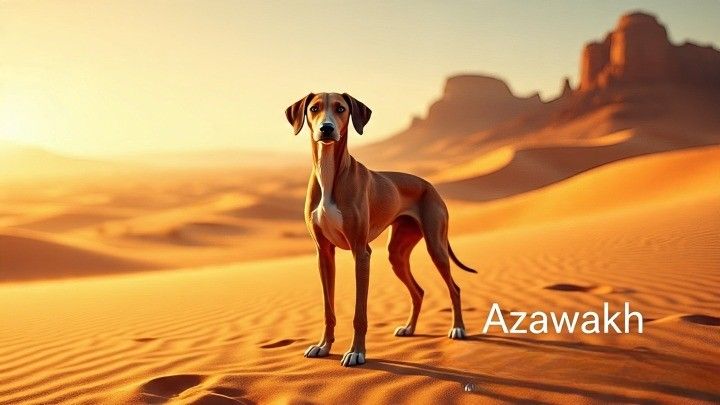
The Azawakh is an exotic breed with great appeal – and utilitarian beauty in its essence and spirit. As the name indicates, the Azawakh comes from the deserts of West Africa. It may have a delicate sighthound form, and it may be rare, but the Azawakh will entrance you with their elegant form and devoted character. Most breeds of dog have wroldwide opportunities to search and find, Azawakh dogs are over three continents removed as they thrive as a rarity, and most of the time, one will in their life, be completely in love with an adeptly independent, effectively devoted, athletic and stunningly exquisite dog that will protect your family and be cultural art in your home.
Origin and History of the Azawakh

The Azawakh originated in the Sahel region of West Africa, a semi-arid desert and grassland region, and has been a traditional and respected member of the Tuareg tribes (who are nomadic people) for its speed and loyalty. Not only did it serve as a hunting dog chasing fast game like gazelles, it served as a guardian also by raising the alarm when threats were nearby. It was also a family member. The Azawakh gained some notoriety outside Africa beginning in the 1970’s, but they are still a very rare breed.
Physical Appearance and Characteristics
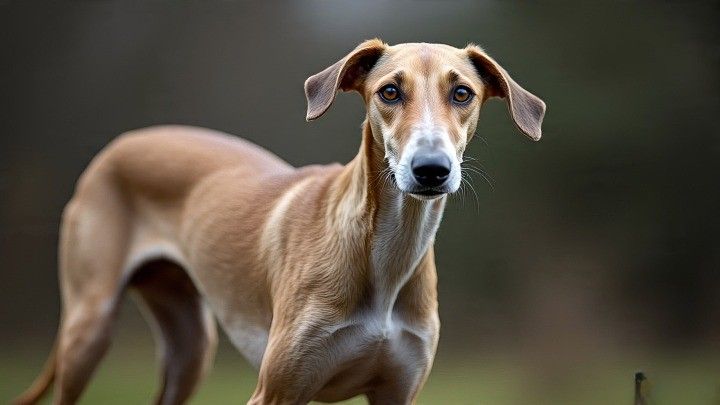
The Azawakh Dog has an athletic and graceful frame that gives it an effortless advantage in speed and endurance. Its short, smooth coat comes in fawn, red, brindle, or blue, often with white markings. Its almond-shaped eyes give a soulful look. Males stand 25–29 inches and weigh 44–55 pounds, while females are 23–27 inches and 33–44 pounds. Its slender frame and graceful moves make it seem almost weightless.
| Characteristic | Description |
|---|---|
| Size (Male) | Height: 25–29 inches (64–74 cm) |
| Size (Female) | Height: 23–27 inches (60–70 cm) |
| Weight (Male) | 44–55 lbs (20–25 kg) |
| Weight (Female) | 33–44 lbs (15–20 kg) |
| Coat Colors | Fawn, red, brindle, blue, black, grizzle, sometimes with white markings on chest, legs, or tail |
| Eye Color | Usually dark brown to hazel, almond-shaped |
| Body Build | Tall, slim, and elegant with long legs and a narrow chest |
| Coat Type | Short, fine, and smooth |
| Head Shape | Long and lean with a refined muzzle |
| Tail | Thin, set low, and slightly curved at the end |
Temperament and Personality Traits

The Azawakh Dog is a unique composition of independence and loyalty. The Azawakh Dog show deep bonds with its family, showing affection to those it trusts but staying reserved with strangers, making it a great watchdog. It’s protective yet gentle with loved ones. With socialization, it can get along with kids and pets, but its prey drive means caution around small animals. Smart but sometimes stubborn, its loyalty is unmatched.
| Trait | Description |
|---|---|
| Loyal | Forms a deep bond with its family and is very protective. |
| Reserved | Often shy or aloof with strangers, takes time to trust. |
| Energetic | Naturally active and needs plenty of exercise to stay happy. |
| Independent | Can be stubborn at times, not always eager to please. |
| Gentle | Despite their strong look, they are calm and affectionate with loved ones. |
Exercise and Energy Needs

The Azawakh is a high-energy breed that is built for speed and stamina, with its slender and elegant physique. Its desert heritage gives it remarkable stamina, requiring at least an hour of vigorous exercise daily. Long walks, secure runs, or activities like lure coursing suit it perfectly. Mental stimulation, such as puzzle toys, keeps its sharp mind engaged. Apartment living can work, but only with dedicated exercise routines to prevent restlessness or boredom.
| Growing Phase | Exercise Needs | Energy Level |
|---|---|---|
| Puppy (2–12 months) | Short play sessions, gentle walks, avoid over-exercising to protect growing joints | High but in short bursts |
| Young Adult (1–3 years) | 1–2 hours daily (running, walking, playtime) | Very high – needs plenty of activity |
| Adult (3–7 years) | 1–2 hours daily (runs, long walks, mental stimulation) | High – stays active and alert |
| Senior (7+ years) | Light walks, gentle play, low-impact activities | Moderate – energy decreases with age |
Training the Azawakh

Training an Azawakh Dog takes more patience due to its independent streak. It is highly intelligent but can be stubborn, so positive reinforcement with treats and praise works best. Harsh methods don’t suit this sensitive breed. Early socialization is vital to ensure it feels at ease with new people and animals. Owners may face challenges with its aloofness, but consistent, gentle training builds a well-mannered Azawakh Dog.
| Aspect | Explanation |
|---|---|
| Obedience Training | Start early with basic commands; keep sessions short and consistent. |
| Socialization | Expose them to people, pets, and new places to reduce shyness. |
| Leash Training | Important due to their strong prey drive; use patience and gentle guidance. |
| Positive Reinforcement | Responds best to rewards, praise, and treats rather than harsh corrections. |
| Mental Stimulation | Needs puzzle toys, scent games, or agility exercises to stay focused. |
Health and Lifespan

The Azawakh Dog typically enjoys a lifespan of 12–15 years, healthy for its size. It may face genetic issues like hip dysplasia or thyroid problems, but regular vet checkups, including hip evaluations, help catch concerns early. A balanced diet tailored to its lean build supports its health, as does maintaining proper weight. Vaccinations and parasite prevention keep it thriving in any environment.
| Factor | Details |
|---|---|
| Average Lifespan | 12–15 years |
| General Health | Usually a hardy and healthy breed |
| Common Health Issues | Hip dysplasia, autoimmune disorders, bloat (gastric torsion), epilepsy, and occasional heart problems |
| Weight Sensitivity | Very lean body; even slight weight changes can affect health |
| Care Needs | Regular vet check-ups, balanced diet, and proper exercise to prevent joint strain |
Grooming and Coat Care
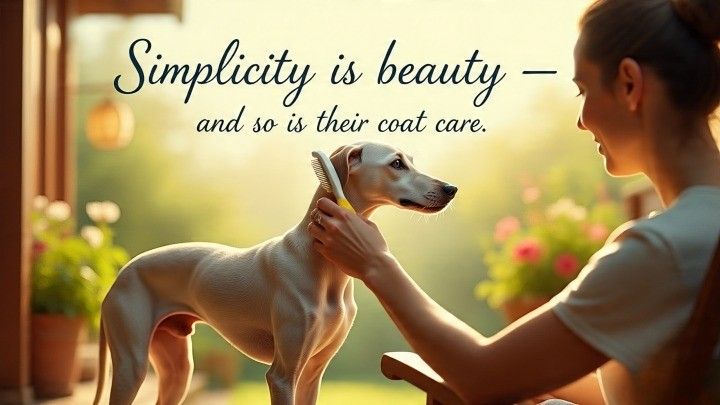
The short coat of the Azawakh Dog sheds very little throughout the year, so its maintenance cost is low. Brushing it once a week keeps its coat shiny. It needs to be bathed less due to its sensitive skin. A mild shampoo can be used for bathing it. Regular nail trimming, ear cleaning, and dental care can help protect it from many diseases. Its sleek coat does not trap dirt, which makes its grooming quick and there is more time for bonding.
| Aspect | Details |
|---|---|
| Brushing | Needs only occasional brushing since the coat is short and fine |
| Bathing | Infrequent baths, only when dirty, as their skin is sensitive |
| Shedding Level | Low – minimal hair around the house |
| Ears | Check weekly and clean gently to prevent infections |
| Nails | Trim regularly since overgrown nails can cause discomfort |
| Teeth | Brush a few times a week to maintain good dental health |
Diet and Nutrition

The Azawakh Dog needs a high-quality diet to fuel its active lifestyle while keeping its lean physique. Foods rich in protein, like chicken or fish, support its muscles, with moderate amounts of fats and carbohydrates for energy. Fillers like corn or soy should be avoided, they can upset its stomach. Feed it twice daily, with portions of about 1.5–2.5 cups of dry food, adjusted to its activity level. Fresh water is a must.
| Age Group | Diet & Nutrition Needs Of Azawakh Dog |
|---|---|
| Puppy (2–12 months) | High-quality puppy food with extra protein, healthy fats, and calcium for bone growth. Feed 3–4 small meals a day. |
| Young Adult (1–3 years) | Balanced diet with lean protein, moderate fat, and carbs for energy. Usually 2 meals a day. |
| Adult (3–7 years) | Nutrient-rich food with good protein and vitamins to maintain muscle and stamina. Avoid overfeeding to keep them lean. |
| Senior (7+ years) | Lighter meals with fewer calories but rich in joint-support nutrients (like glucosamine) and easily digestible protein. 2 small meals a day. |
Living Environment Needs

The Azawakh dog does best in homes where it has plenty of room to run, and a safe, fenced yard is important because of its strong chase instinct. Fences must be high and sturdy, as it may chase moving objects. It prefers warm climates, as its thin coat offers little cold protection. Indoors, it loves cozy spots but needs room to stretch. With enough exercise, it can adapt to smaller spaces but is happiest with open areas.
| Aspect | Details |
|---|---|
| Climate | Best suited for warm climates; they don’t tolerate cold well and need protection in chilly weather |
| Space | Prefers a home with open space or a secure yard; not ideal for very small apartments unless exercised daily |
| Exercise Area | Needs safe, fenced areas to run and stretch, as they are natural sprinters |
| Indoor Living | Enjoys being close to family indoors; sensitive to being left alone for long hours |
| Sleeping Needs | Comfortable, soft bedding is important since their body is lean and has little padding |
Azawakh as a Family Dog

The Azawakh Dog forms tight bonds with its family, often choosing one person as its closest companion. It is gentle with children if raised together, but its reserved nature calls for gradual introductions. As a protector, it is alert and ready to defend its home, yet affectionate with loved ones. Teaching kids to respect its space ensures harmony, making it a loyal family member.
Azawakh and Other Pets

The Azawakh Dog can live with other dogs if socialized early, but its prey drive makes it prone to chasing smaller animals like cats. Slow introductions help it accept other pets. Training to curb its chasing instincts is essential in multi-pet homes. With time, it can coexist peacefully, but owners must stay vigilant due to its hunting instincts.
Breed Recognition and Popularity Azawakh Dog
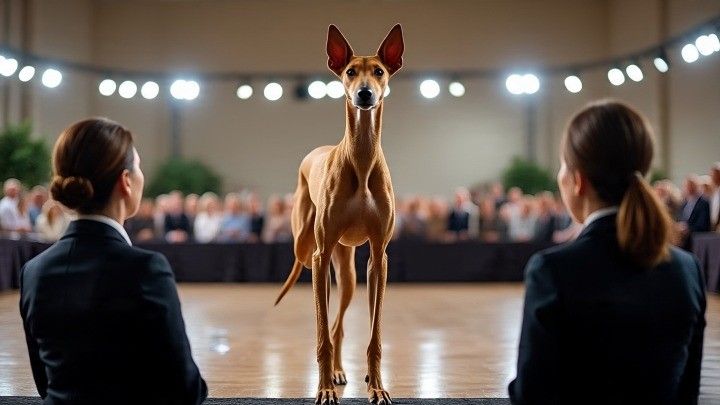
The Azawakh Dog is recognized by major kennel clubs, including the AKC since 2011, but remains one of the rarest breeds worldwide. Finding one outside Africa is challenging due to limited breeders. Its striking look and unique traits are gaining interest among enthusiasts, but its rarity adds to its allure, making the Azawakh Dog a special choice for dedicated owners.
Cost of Owning an Azawakh

| Country | Approximate Price (Local / USD) |
|---|---|
| India | ₹25,000–₹50,000 (~$300–$600) (Petzlover) |
| USA | $2,000–$3,000 (typical price) (Spot Pet Insurance, PetMD) |
| Australia | $600–$800 (puppy price) (PetNetID) |
| Russia | ₽50,000–₽80,000 (~$650–$1,000) |
| Western Europe (France, Germany, etc.) | €500+ (~$550+) (pedigree puppies) |
| Global (higher-end breeders) | $8,000–$8,500 (Petmeetly) |
| Global (very premium show lines) | Up to $9,500 (India Pet, fresherslive.com) |
| UK | Estimated £2,000–£3,000 (~$2,500–$3,800) based on rarity—approximation, not precise data |
| Canada | Likely similar to the USA: approx. CAD 2,600–4,000 (~$2,000–$3,000 USD) (inferred from US data) |
| France | Around €500 for standard pups; higher for show lines |
Why the Price Differences?
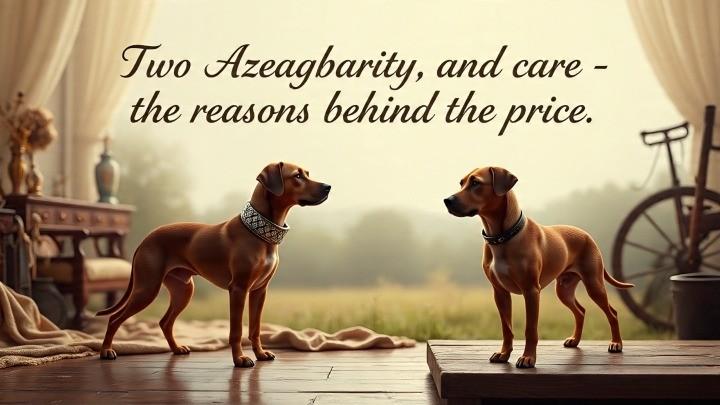
- India offers more affordable pricing, often around ₹25k–₹50k for quality puppies Petzlover+1
- In the USA, prices tend to range between $2k–$3k, reflecting both rarity and breeding standards Spot Pet InsurancePetMD.
- Australia shows a lower estimate at $600–$800 in some listings PetNetID.
- Russia and parts of Europe often list pups starting at €500 or ₽50,000–₽80,000, depending on pedigree.
- High-end breeders globally command steep prices—$8k–$9.5k for exclusive or champion bloodlines PetmeetlyIndia Petfresherslive.com.
Quick Summary
- Cheapest market (India, Australia): ₹25k–₹50k / $300–$800
- Mid-range (USA, Canada, Europe standard pups): $2k–$3k (or equivalent)
- Premium or show-line pups globally: $8k–$9.5k
These prices are estimates and can shift based on health certifications, parentage, and demand. Always research breeders carefully and look for health guarantees.
Finding a Responsible Breeder or Adoption Option
Choosing a responsible breeder is vital for a healthy Azawakh Dog. Look for breeders offering health clearances for hips and thyroid, prioritizing temperament. Ask about the parents and living conditions to ensure ethical practices. Adoption is rare but possible through breed-specific rescues. Researching online or contacting kennel clubs can connect you with reputable sources for an Azawakh Dog.
Pros and Cons of Owning an Azawakh
| Pros | Cons |
|---|---|
| Loyal and protective towards family | Reserved and aloof with strangers |
| Low grooming needs | Sensitive to cold weather |
| Elegant, athletic appearance | Needs a lot of exercise and space |
| Intelligent and alert | Can be stubborn and independent |
| Generally healthy with long lifespan | Strong prey drive – may chase small animals |
Comparing Azawakh to Similar Breeds
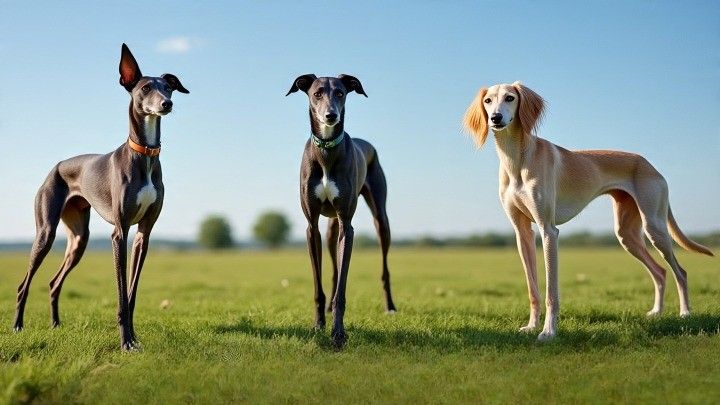
Compared to Greyhounds, the Azawakh Dog is leaner and more reserved, with stronger guarding instincts. Against Salukis, it is less feathered and more aloof, with a sharper hunting focus. Versus Sloughis, it is slimmer and more intense. The Azawakh Dog’s unique mix of elegance, speed, and loyalty makes it stand out among sighthounds.
Fun Facts About the Azawakh
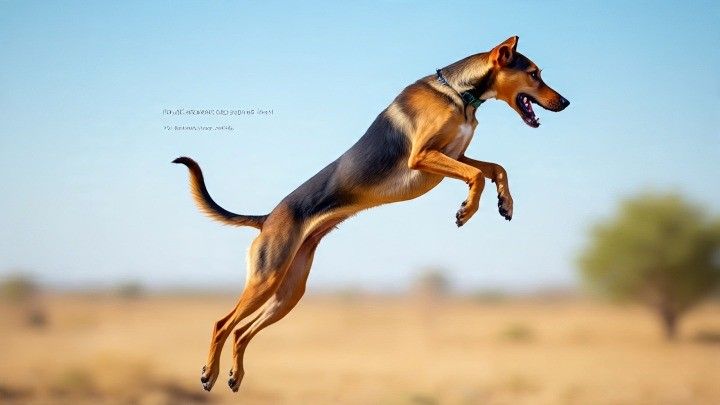
- Built for Speed: Their incredibly lean and long-legged body is built like a race car, allowing them to run up to 40 mph!
- Sun Lovers: They come from the Sahara Desert and love the heat. They get cold very easily and often need a coat in winter.
- Loyal but Reserved: They are extremely loyal to their family but are often shy and distant with strangers.
- Act Like Cats: They are known for their independent, graceful, and sometimes aloof personality, much like a cat.
- Named After a Place: Their name comes from the Azawakh Valley in Africa, which is their original home.
Frequently Asked Questions (FAQ)
- Are Azawakhs good family dogs? Yes, with socialization, the Azawakh Dog is loyal and gentle, best with older kids.
- Do Azawakhs bark a lot? No, it is quiet but may bark to alert you of strangers.
- How much exercise does an Azawakh need daily? It needs at least an hour of vigorous activity, plus mental stimulation.
- Are Azawakhs easy to train? The Azawakh Dog is intelligent but independent, requiring patient, positive training.
- How long do Azawakhs live? It typically lives 12–15 years with good care.
- Do they get along with cats or small pets? Its prey drive makes this tricky, but socialization helps.
- How much does an Azawakh puppy cost? An Azawakh Dog puppy costs $2,000–$4,000 from a reputable breeder.
- Are Azawakhs recognized by the AKC? Yes, Since 2011 it has been in the Hound Group.
- Can Azawakhs adapt to apartment living? It can, with enough exercise, but prefers space to run.
- What makes Azawakhs different from other sighthounds? The Azawakh Dog’s leaner build, intense loyalty, and reserved nature set it apart.
Conclusion
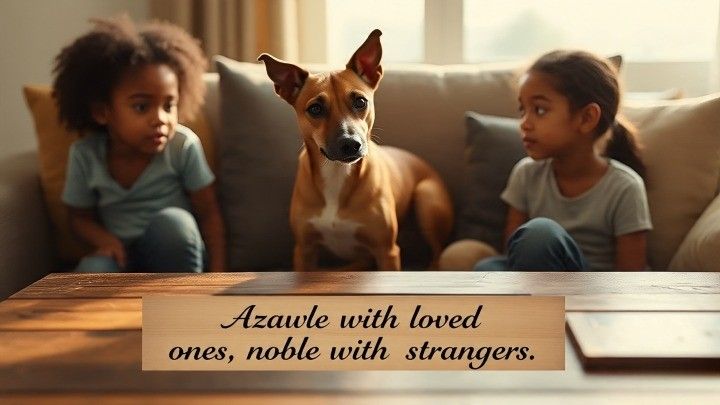
The Azawakh dog is absolutely special. Its graceful look, loyal nature, and athletic body make it special. Its desert origins and old relationship with the Tuareg tribe give it a rich history. Its striking look and devoted personality make it an excellent companion.From high energy levels to low-maintenance grooming, it requires dedicated care… but what you get in return is its unmatched loyalty. For those who really want to understand its unique qualities, the Azawakh offers a really special bond.
